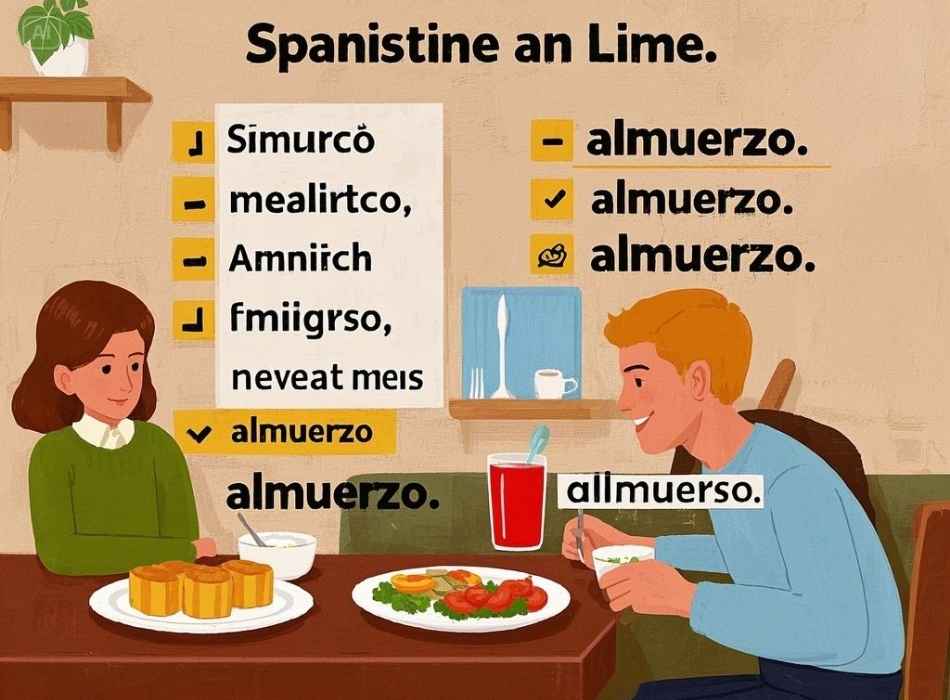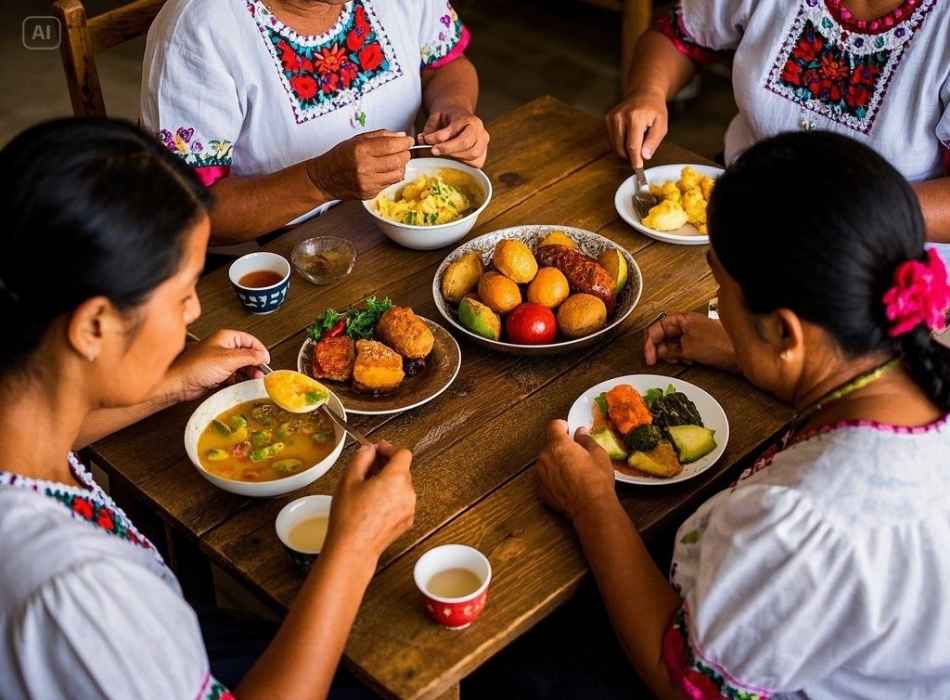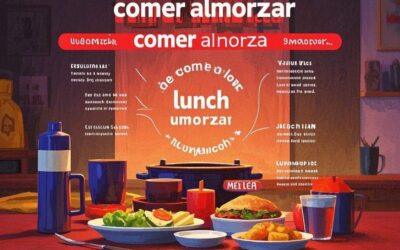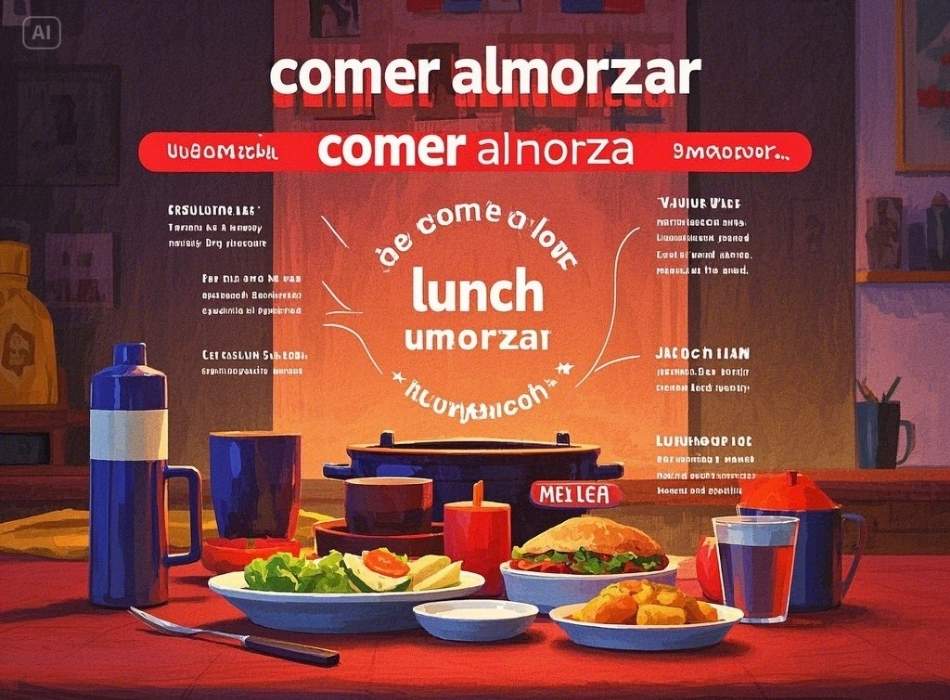Learning to say “lunch” in Spanish may seem straightforward, but it opens the door to a world of cultural insights, regional vocabulary, and linguistic nuances. Whether you’re a Spanish learner, a language enthusiast, or traveling through Spain or Latin America, understanding mealtime terminology can be incredibly rewarding. This blog will explore how to say “lunch” in Spanish, teach you related vocabulary, and even provide tips for perfecting mealtime conversations.
Get ready to add some flavor to your Spanish skills!
The Basics: How to Say “Lunch” in Spanish
The word for “lunch” in Spanish is “almuerzo.”
Pronounced “ahl-mwer-so,” this term is widely used to refer to the midday meal across Spanish-speaking countries. However, as with many words in Spanish, the meaning and usage of “almuerzo” can vary depending on the region. Here’s a quick breakdown:

- Spain: “Almuerzo” often refers to a mid-morning snack, especially if the main meal of the day is served later in the afternoon (known as “comida”).
- Latin America: “Almuerzo” is commonly used for the primary midday meal, equivalent to what English speakers call lunch.
This distinction is crucial, especially when navigating mealtime in Spain versus Latin America. No one wants to attend lunch when their host only expects a coffee and snack!
Why Understanding Mealtime Vocabulary is Important
Knowing “lunch” is just the tip of the iceberg. A deeper understanding of mealtime vocabulary helps you:
- Order food confidently while traveling. Understanding words like “menú” (menu) and “platos principales” (main dishes) can take the stress out of dining out.
- Participate in local conversations. Food is a significant part of culture, and being able to describe meals or ask about recipes connects you with native speakers.
- Immerse yourself in the culture. Mealtime customs reflect a country’s lifestyle and values. For instance, leisurely lunches are the norm in Spain, while in some Latin American countries, the meal may be quicker and less formal.
Now that we’ve got the basics down, let’s look at more related vocabulary.
Additional Spanish Mealtime Words and Phrases
When discussing meals in Spanish, you’ll inevitably encounter a variety of terms beyond just “almuerzo.” Here’s a cheat sheet of essential mealtime vocabulary to enrich your Spanish skills:

Names of Meals
- Desayuno (“deh-sa-yoo-no”) – Breakfast
- Almuerzo (“ahl-mwer-so”) – Lunch
- Cena (“seh-na”) – Dinner
- Merienda (“meh-ree-en-da”) – Snack (Usually eaten in the afternoon)
Useful Dining Vocabulary
- Mesa – Table
- Menú – Menu
- Camarero / Mesero – Waiter/Server
- Plato’s principal – Main dish
- Entrada – Appetizer
- Postre – Dessert
Common Foods and Drinks
- Pan – Bread
- Carne – Meat
- Pescado – Fish
- Ensalada – Salad
- Frutas – Fruits
- Café – Coffee
- Vino – Wine
- Agua – Water
- Refresco – Soft drink
Example Phrases for Dining
- “¿Qué hay para almorzar?” (What’s for lunch?)
- “¿Me puede traer el menú, por favor?” (Can you bring me the menu, please?)
- “¿Tienen opciones vegetarianas?” (Do you have vegetarian options?)
- “La cuenta, por favor.” (The check, please.)
Cultural Note on “Comida”
Another word you may encounter is “comida,” which directly translates to “food” or “meal” but is also commonly used to refer to lunch in Spain. It underscores the importance of the midday meal, often the largest and most social meal of the day, typically enjoyed with family or friends.
Mealtimes in Spanish-Speaking Cultures
Understanding the timing and social customs surrounding meals is as essential as learning vocab. Here’s a quick overview of typical mealtimes:

- Spain:
- Breakfast (“Desayuno” ): 7-9 AM, usually light, like coffee and toast.
- Mid-morning snack (“almuerzo”): Around 10-11 AM.
- Lunch (“comida” ): 2-3 PM, typically the most significant meal.
- Dinner (“cena” ): 8-10 PM, often lighter than lunch.
- Latin America:
- Breakfast (“Desayuno” ): Similar hours to those in Spain; can be more substantial.
- Lunch (“almuerzo” ): Around noon or 1 PM.
- Dinner (“cena” ): Typically served earlier, between 6-8 PM.
Travel tip: If you’re dining in Spain, remember that restaurants may close between 4 and 8 PM as locals enjoy their “siesta” time. Don’t show up hungry before dinner!
Common Variations in Expression
Spanish is a diverse language; different regions use different terms for meals and food. Here are some examples:
- Mexico: You might hear “lunch” (from the English “lunch”) used informally instead of “almuerzo.”
- Argentina: Breakfast (“Desayuno”) is usually a small meal of coffee and pastries.
- Caribbean Nations: Some dishes have their own unique vocabulary, such as “comida criolla” (Creole food) in local cuisine.
- Spain: “merienda” refers to an afternoon snack, usually between lunch and dinner.
- Colombia: Some areas use “once” for a light meal or snack before bedtime.
While there are commonalities, being attuned to regional differences will significantly enhance your interactions!
Tips to Practice Mealtime Vocabulary
Here are a few strategies to reinforce your knowledge of Spanish mealtime terminology:
Flashcards
Make vocabulary flashcards with words like “almuerzo” and “merienda” on one side and their translations on the other.
Practice with Apps
Use language learning tools like Duolingo or Memrise, often with dining-focused lessons.
Dining Roleplay
Pretend you’re at a Spanish café and practice ordering food aloud. Better yet, ask a Spanish-speaking friend to help you roleplay.
Food Blogs and Recipes
Watch Spanish food bloggers or read recipes in Spanish. You’ll gain cultural insights while boosting your vocabulary!
Experience It Firsthand
Next time you travel to a Spanish-speaking country, make it your mission to use these phrases in real-life dining situations. Your conversation partners will appreciate the effort!
Language Exchange
Join a language exchange group and offer to teach someone how to cook a typical dish from your country in exchange for practicing Spanish over the meal.
Spanish Food Vocab Games
Download an app or find online games that let you practice food vocabulary in a fun and interactive way.
Cooking Classes in Spanish
Sign up for cooking classes taught in Spanish. Not only will you learn new dishes, but you’ll also be immersed in the language while cooking with others.
Read Menus Aloud
Next time you’re at a Spanish restaurant, try reading the menu aloud to
Master Spanish, One Word (or Meal) at a Time
Learning to say “lunch” in Spanish is just the start of mastering mealtime conversations. Understanding context, practicing regional vocabulary, and immersing yourself in Spanish-speaking cultures will take your language skills to the next level.
If you’re hungry for more, start practicing these phrases today. Whether you’re planning your next trip or looking to impress in your Spanish class, your linguistic skills are guaranteed to grow.
Here’s your challenge: Next time you’re at a Spanish restaurant or café, try ordering your “almuerzo” entirely in Spanish. You will enjoy delicious food, and the confidence boost will be just as satisfying!



















